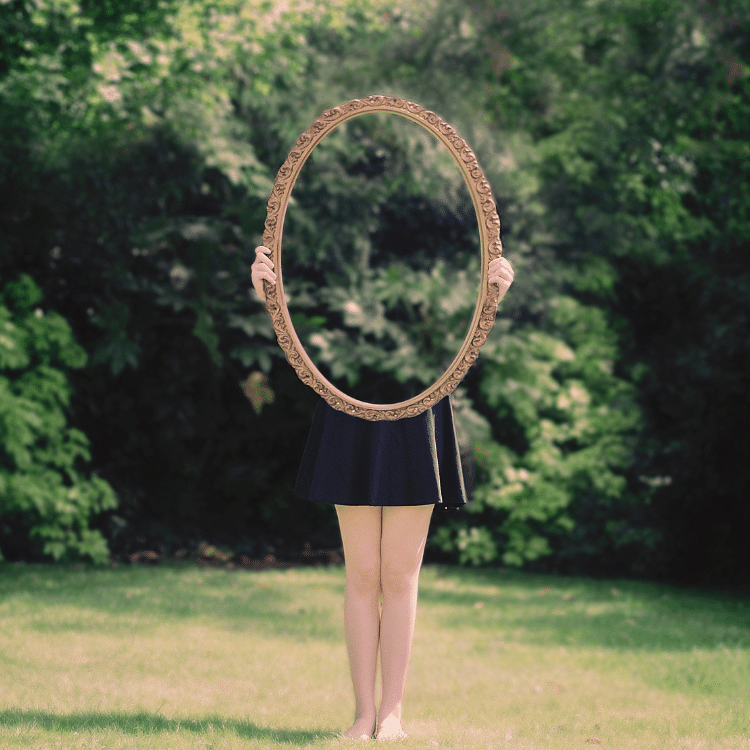On the Nature of Beauty
text | 1800 words — Beauty as the Interaction Between Perceiver and Object
I wrote the essay below back in 1989. It was an assignment for a Philosophy of Art class at San Jose State University where I studied Industrial Design and Art Education, and attained 3-time All-American status in the sport of . . . take a guess . . . bowling. Bowling went the wayside long ago, but this inquiry about beauty stood the test of time.
This may be the earliest writing of substance that I have a record of. Looking back, I see this as the start of a lineage of inquiry about beauty and nonduality. I also recognize my thinking here was deeply informed by a life-changing revelation about unconditional love, which happened about 5 years prior. Even after all these years, I don’t think I’ve read or heard this perspective on the nature of beauty shared elsewhere.
The next writing in this lineage is from 1993 about The Profound Beauty of the Ordinary (link forthcoming). Then in 2000, came my PhD dissertation, What Is Beauty?: A Living Inquiry for the Mind and Heart.
The article below has a few minor edits, stemming from my need to update pronoun usage (e.g. the original title was “Beauty As Interaction Between Man and Object.”
You can see Professor Leddy’s feedback/footnotees at the end of the article.
Beauty as Interaction Between Perceiver and Object
Maja Apolonia Rode
Philosophy of Art
Dr. Leddy
March 9, 1989
THE BEAUTIFUL IS THAT WHICH BRINGS OUT THE GOOD IN THE PERCEIVER
In his essay, "A Theory of Aesthetic Judgment,” Immanuel Kant said “The beautiful is that which, apart from any interest, pleases universally"; one can recognize beauty by his reaction (of pleasure) to an object. | agree with Kant that the way to recognize beauty is through one's reaction, but to say that the feeling of pleasure is the only indication of a beautiful object is too limiting. A beautiful object is that which triggers any positive reactions, emotions, or feelings, in the viewer. The perception of beauty results in any expression or awareness of one's moral and good nature (e.g. joy, love, compassion, peace, etc.) Essentially, a beautiful object brings out the good in the person perceiving it. [1]
BEAUTY IS BOTH PHYSICAL AND CONCEPTUAL
The beauty Kant describes is dependent only on what our senses perceive and is totally detached from a concept or interest in the object. What he describes would be better termed “universally pleasing,” or perhaps, “pretty.” [2]
Usually, it is through vision and hearing that we recognize beauty. We see beautiful paintings, landscapes, or animals. We hear the beautiful music of a Mozart symphony or the song of a bird. It is not often, however, that we notice beauty through the senses of touch, taste and, smell. If beauty were purely sensual, surely more of our senses would be involved. We might say a food is delicious, and derive pleasure from eating it, but we would not call it beautiful. [3] I suppose it would be possible to think, for instance, a piece of bread is beautiful as you are eating it, if you consider the creation of it (from growing the wheat, to baking the dough) but, in general, it can be agreed that our perception of beauty seems limited to our senses of sight and hearing. I believe the reason for this is that most of our thinking is done with pictures and sounds. It is through these two means that we form ideas and values. It seems, then, that beauty has to do with the thoughts and ideas one has about an object. [4]
I feel that the meaning behind an object is a element that greatly affects its beauty. For instance, if one viewed a piece of tribal art and very similar artwork by an American artist, he may have more appreciation for the tribal piece because of the creator and the culture from which it came. He would experience more positive feelings from the tribal piece, and therefore find more beauty in it than its visually equal counterpart.
It seems that beauty has not only to do with the uninterested pleasure from the physical appearance of an object (as Kant claimed), but also with the concepts, ideas, and knowledge one has about the object. The physical aspect of beauty may be thought of as the beauty of the object, the conceptual aspect may be thought of as the beauty of the subject.
THE ABILITY TO PERCEIVE BEAUTY DEPENDS ON THE MIND OF THE INDIVIDUAL
Kant says that to find an object beautiful one must feel the pleasure immediately in the representation of the object; one cannot be talked into it by any argument. | don't think this applies to all people. Suppose someone finds beauty in an object and another person doesn't see it. The first person has some knowledge, or value of the object or perhaps they are just in the right mood, which gives them the ability to see its beauty; the second person is lacking that which would allow them to see the beauty. Depending upon where the discrepancy lies, a person may or may not be ‘talked into’ seeing the beauty in an object.
For instance, if someone is looking at a painting and doesn’t find it immediately pleasing to the eye because of poor workmanship on the part of the artist, when they are told it was painted by a mentally disabled person, they may find beauty in the painting that they didn't see before. On the other hand, if someone is afraid of horses, dislikes them, and does not value them at all, no amount of argument will convince them to find pleasure in a skillfully rendered painting of a horse. [5]
A person may or may not derive pleasure (or otherwise sense beauty) from a beautiful object, depending on their taste, knowledge, previous experience, and mood. If someone feels that an object is beautiful, they see that beauty as an attribute of the object; they know the beauty is there for others to see if they are able to. It is up to the individual whether or not they see the beauty which is there.
BEAUTY AS INTERACTION BETWEEN SUBJECT AND OBJECT
Those who try to define beauty seem to feel it is attributable to the object of delight (labeling a work of art beautiful) or to the subject experiencing the delight (the familiar phrase “beauty is in the eye of the beholder” comes to mind). The whole concept of beauty is approached as a subjective/objective one. It seems that neither the subjective nor the objective interpretations of beauty are complete. Perhaps the answer lies not in the object or the subject, but rather in the relationship between the two.
This concept is very similar to the written communication between two people:
The written communication of a message requires a reader and a writer. Without a certain capacity to understand a written message, the reader will not receive it, and no communication will take place. If the sender does not know how to write in a language the speaker can understand, again no communication will take place. The communication itself is not attributable to either one of the two people, rather it is the product of the interaction of sending and receiving a message. There are four elements in this situation: the writer, the reader, the message, and the communication. The sender and receiver can be described as literate, illiterate, or somewhere in between.
Similarly, an object of beauty (like the writer) is the sender of an image of beauty. The subject (like a reader) is the receiver, or, more specifically, the perceiver. The image (like the message) is what is being conveyed. Beauty itself (like communication) is a result of the whole process.
The subject and object can be thought of as beautiful, ugly, or somewhere in between. So how beautiful the sender and receiver are may be compared to how literate the reader and writer are.
I make a distinction here which is not usually made, between beauty and the beautiful. How beautiful a thing is, is a measure of how able it is as a subject to perceive beauty, and how able it is as an object to send the image of beauty. Beauty, again, is the result of the sending and perceiving of the image of beauty.
BEAUTY PUTS THE PERCEIVER IN TOUCH WITH THEIR OWN HIGHER NATURE
Kant says that interest in the beauty of nature is akin to the moral. Similarly, I feel that the ability to perceive beauty says something about the subject. The ability is not necessarily an indication of the subject’s moral state, but it is a sign of inner beauty. The more someone is able to perceive beauty, the more things they are able to see as beautiful. Since the result of the perception of beauty is awareness of one’s higher nature, the person is more in touch with that which is good and beautiful within them.
The object of beauty is the catalyst for the expression or realization of that which is good in the perceiver. Beauty, then, is the interaction between a person and an object of beauty which allows the person to become in touch with their own higher nature.
Footnotes/Comments from Dr. Leddy
Maja:
This is a good start to the essay. My interest is already aroused. I agree that limiting the reaction to beauty to "pleasure" is too narrow.
Yes, good point.
But Kant manages to exclude these things by saying that an apprehension of beauty, although sensuous, must also be disinterested. We have an immediate interest in food and sex.
This is a very interesting line of argument. If Kant chooses to emphasize sight and hearing for these reasons, even unconsciously, then he cannot speak of beauty as separated from concepts, as he in fact does.
Good discussion. Maybe Kant means that you cannot be talked into believing that something is beautiful without seeing it.
Grade: B+
This is a fascinating paper. Could you revise it: polish and expand? I would like to see the connections between the various sections made out more clearly. For instance, you may have seen your section on how beauty depends on the mind of the individual as supporting your point that beauty is, in part, conceptual.
That needs to be stated more clearly. Your analogy to written communication is intriguing...but once again, needs some more elaboration. You might also bring out the differences between yourself and Kant: whereas Kant believes that beauty of nature is akin to the moral, you believe that apprehension of any sort of beauty is a sign of inner beauty in a sense that is broader than the merely moral. But can the moral be subsumed under this notion of inner beauty?
You make some pretty broad claims in the last section to which I for one am sympathetic. However, you need to consider coming up with some reasons to support this position against those who might be skeptical of it.
The Taste of Beauty
Given my assumption about the sense of taste and beauty in the essay above, the following excerpt from my dissertation 10 years later makes me smile.
(Figure 3. This “Taste of Beauty” was recorded in two of the participants’ journals. Grace, a participant in the project, shared her homemade chocolates at the research retreat.)
Read my dissertation What Is Beauty?: A Living Inquiry for the Mind and Heart
You May Also Enjoy . . .
Tags
131-MBC







program | 10-part series — on staying true to what’s true in you
Join me for in-depth dialogues with teachers of timeless wisdom as we explore the questions: What is self-love? Why does it matter? How do we cultivate a self-loving world starting with ourselves?